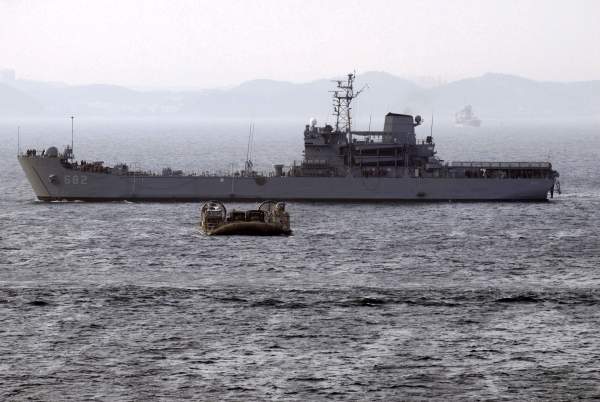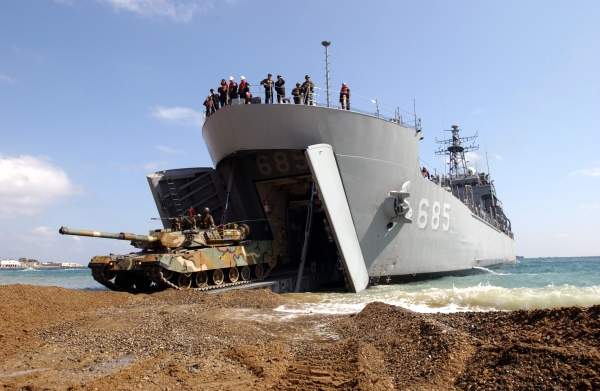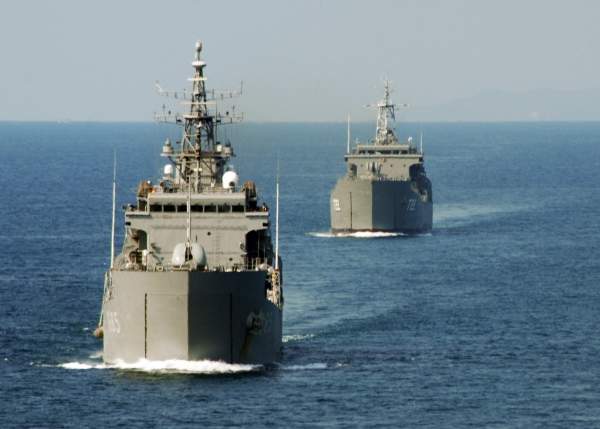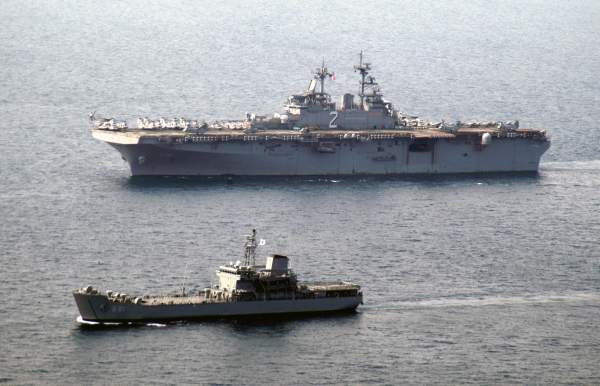Go Jun Bong Class LST (landing ship tank) is in service with the Republic of Korea Navy (ROKN). Four LSTs were built by Korea Tacoma (now Hanjin Heavy Industries) during 1991-96. The class is preceded by the Un Bong Class LST.
Development of Go Jun Bong vessels
The ROKN unveiled the phased development in the late 1980s for new LSTs to replace the ageing fleet of US built LST-542 Class LSTs, which were known as Un Bong Class LST in Korean service.
The Go Jun Bong Class LSTs were built under the first phase known as LST-I. The development and design of the class began in 1987.
The first ship in class, Go Jun Bong (LST 681), was launched in 1991 and commissioned in 1994. Bi Ro Bong (LST 682) was launched in 1995 and commissioned in 1998. The remaining ships in class, Hyang Ro Bong (LST 683) and Sung In Bong (LST 685), were launched in 1996 and commissioned in to the ROKN in 1999.
Hanjin Heavy Industries was contracted to design and build next generation landing ship tanks under the second phase (LST-II). The new ships are expected to join the Korean fleet between 2013 and 2016.
The ROKN is also building mid-size helicopter amphibious landing ships under a project named LPX. The first ship in class, Dokdo, was commissioned in July 2007. The induction of modern warships in to the fleet is a strategic plan of the ROKN towards the acquisition of blue-water combat capabilities.
Operations / missions involving the South Korean landing ship tank
The Go Jun Bong class LST is deployed in the transportation of troops, supplies and heavy equipment during war and peace times. The ships can support the landings of military forces to remote areas where ports are not available.
Design and features of the Go Jun Bong Class LST
The Go Jun Bong class LST was designed based on the LST-542 Class. The outer structure is very similar to that of the LST-542, but the internal arrangement differs from that of its predecessor.
The ships are fitted with doors and ramps on the stern and bow side, unlike the LST-542 which has doors on the bow. The turntable fitted on the ship allows quick loading and unloading of vehicles.
The ship is also equipped with a ramp for moving trucks up to the deck. The multiple elevators aboard the ship enable rapid loading of provisions and cargo.
The Go Jun Bong Class LST has an overall length of 112.5m, beam of 15.4m and draft of 3.1m. The full load displacement of the ship is 4,300t. The LST can complement a crew of 121 members.
Cargo capacity and weapon systems of the Republic of Korea Navy (ROKN) ships
The ship is designed to land personnel, tanks, vehicles, cargo and equipment simultaneously through its doors and ramps on the stern and bow.
It can carry 258 troops, 12 battle tanks, 14 amphibious assault vehicles and eight 2.5t class trucks.
The LST can also launch and recover four landing craft, vehicle, personnel (LCVPs) to complement amphibious operations. The aft helicopter deck allows the operations of a single medium-lift utility helicopter, such as a Sikorsky UH-60 Black Hawk.
The ships are also fitted with wide range of equipment and systems to enable the safe loading and off-loading of vehicles and cargo.
The main gun fitted on the bow deck is a 40mm Breda L70K naval gun. The LST is also armed with two 20mm six-barrelled M61 Vulcan gatling guns.
Each gun can fire 4,000 to 6,000 rounds a minute. The Vulcan cannon provides close-point defence against fixed-wing aircraft as well as incoming anti-ship missiles and rockets.
Propulsion
Go Jun Bong class LST is powered by two S.E.M.T. Pielstick 16 PA6V 280 diesel engines. Each engine delivers a power output of 6,400hp. The propulsion system provides a maximum speed of 16.2kt. The ship has a cruising range of 4,500nmi at 12kt speed.
The Global Naval Surface Combatants and Warfare Systems Market 2011-2021
This project forms part of our recent analysis and forecasts of the global naval surface combatants and warfare systems market available from our business information platform Strategic Defence Intelligence. For more information click here or contact us: EMEA: +44 20 7936 6783; Americas: +1 415 439 4914; Asia Pacific: +61 2 9947 9709 or via email.











